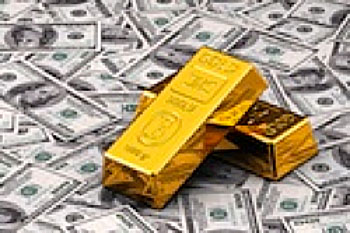The annual value for gold demand in 2011 equaled $205.5 billion (B), an all-time high and a 29% gain above the 2010 value. Jewelry accounted for $99B in gold demand, while investment demand was close behind with nearly $83B. Interestingly, the majority of investment demand value was due to physical bar and coin demand, which represented $75B. As more investors remain skeptical and lose confidence in the global financial system, they turn to physical gold for protection. The annual report explains, "The bar and coin story is one which has traversed borders led by China, India and Europe, but other markets have also participated in terms of relative growth rates. Store of wealth demand, diversification, negative real deposit rates, the threat of inflation in developing markets, deflation in developed markets and currency debasement have all contributed to driving up demand over the last few years."
Don’t Miss: Warren Buffett Trashes Gold, but What About Silver?
In 2011, the average price of gold averaged $1,571 per ounce (oz), which was more than 28% higher than its 2010 equivalent. While this contributed to the record annual value for gold demand, it also proved an argument against gold to be incorrect. Many gold critics claim that as gold prices increase, the supply of gold will also increase from people selling any form of gold they might hold. However, this is simply not true. Despite a nominal record high of $1,900/oz, recycled gold declined by 2%. In fact, recycled gold supply has been declining since 2009, when it hit a peak of 1,694.7 tonnes. The WGC explains, "Despite the rise in prices, recycling activity was constrained by a combination of expectations for higher prices, acclimatization to a higher current price level, economic growth and exhaustion of near-market supply."

(Image courtesy of Bigstock)
Record high gold prices also failed to significantly curtail the appetite for industrial demand. The technology sector demanded 463.5 tonnes of gold in 2011, down from 466.4 tonnes in 2010, but still above the 456.3 tonne average of the preceding five-year period. Within the sector, electronic demand increased from 326.9 tonnes in 2010 to 330 tonnes in 2011. The dental segment is the one area that appears to be affected by rising gold prices. Dentistry gold demand fell 10% year-over-year to 43.8 tonnes. The WGC reports, "This result was driven by the elevated gold price and weak economic conditions, which continued to encourage substitution both in favor of palladium and nonprecious options, mainly cobalt-chrome and ceramic materials.” However, dentistry represents a small portion of global gold demand, and will not have a material impact on prices.
Investor Insight: Will Gold Cleanse the World from Fiat Currencies?
Even though 2011 was filled with volatility and higher gold prices, the world still craves the only world reserve currency that cannot be printed. The current trends that have fueled the 11-year gold bull market remain in place. Furthermore, gold prices continue to receive additional support as central banks not only devalue fiat currencies, but also purchase gold themselves. "The net buying trend which started in Q209 has proliferated, as emerging market central banks have continued to add gold on increasing concerns about the creditworthiness and low yields of their existing reserve assets. Both the euro area sovereign crisis and the sovereign debt downgrade in the U.S. during the summer of 2011 have compounded these worries," states WGC. In the past two years, central banks have purchased more than 500 tonnes of gold.
Eric McWhinnie, Wall St. Cheat Sheet
If you would like to receive professional analysis on equity miners and other precious metal investments, we invite you to try our premium service free for 14 days.
To contact the reporter on this story: Eric McWhinnie at [email protected]



























































